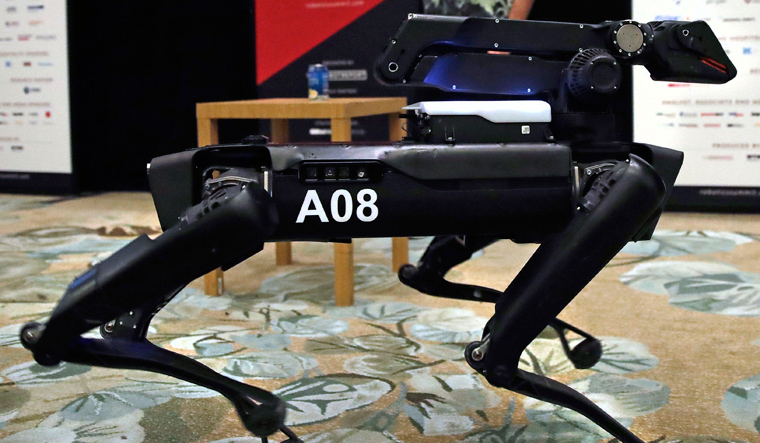MIT's Cheetah 3 robot can now leap and gallop across rough terrain, climb a staircase littered with debris, and quickly recover its balance when suddenly yanked or shoved, all while essentially blind, scientists say.
The 40-kilogramme mechanical beast - about the size of a full-grown Labrador - is intentionally designed to do all this without relying on cameras or any external environmental sensors.
Instead, it nimbly "feels" its way through its surroundings in a way that engineers at the Massachusetts Institute of Technology (MIT) in the US describe as "blind locomotion," much like making one's way across a pitch-black room.
"There are many unexpected behaviours the robot should be able to handle without relying too much on vision," said the robot's designer, Sangbae Kim, an associate professor at MIT.
"Vision can be noisy, slightly inaccurate, and sometimes not available, and if you rely too much on vision, your robot has to be very accurate in position and eventually will be slow. So we want the robot to rely more on tactile information. That way, it can handle unexpected obstacles while moving fast," Kim said.
Within the next few years, Kim envisions the robot carrying out tasks that would otherwise be too dangerous or inaccessible for humans to take on.
"Cheetah 3 is designed to do versatile tasks such as power plant inspection, which involves various terrain conditions including stairs, curbs, and obstacles on the ground," Kim said.
"I think there are countless occasions where we (would) want to send robots to do simple tasks instead of humans. Dangerous, dirty, and difficult work can be done much more safely through remotely controlled robots," Kim said.
The Cheetah 3 can blindly make its way up staircases and through unstructured terrain, and can quickly recover its balance in the face of unexpected forces, thanks to two new algorithms developed by Kim's team: a contact detection algorithm, and a model-predictive control algorithm.

